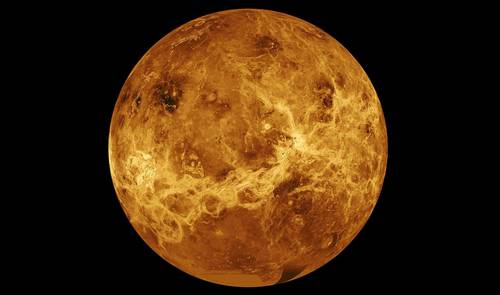This 2025 could mark a before and after in the exploration of celestial bodies with the beginning of the Venus Life Finder mission, an exploration program designed to search for signs of life in the clouds of the most inhospitable planet of the solar system. The initiative is backed by the Massachusetts Institute of Technology and the Rocket Lab USA Inc.
In an interview with The day On the relevance of the mission, Antigona Segura Peralta, a researcher at the Institute of Nuclear Sciences of the National Autonomous University of Mexico (UNAM), explained that it is the first phase of a series of expeditions focused on the astrobiology of this volcanic planet that will last until 2041.
Although there is still no confirmed date, the exploration is scheduled for the first months of 2025. It will start with the launch of the rocket Electron from Rocket Lab, which near the star will allow the spacecraft to display Photon From Rocket Lab. This, in turn, will wear a small probe of about 20 kilograms, which will drop just before entering the atmosphere.
The astrobiology expert explained that this device will be equipped with an instrument, known as autofluorescence (AFN), which will allow you to look for organic material in the clouds and characterize the particles.
It is an approximation with a small team with a five -minute life. Although it will not confirm the existence of life, it could identify conditions that make it possible.
The specialist mentioned that before this mission, others have been developed, where the ships are maintained around it to map the surface or to measure the sulfur dioxide in its atmosphere, the latter an indicator of volcanic processes.
Unlike the previous ones, this operation will focus on staying in the clouds, instead of simply crossing and observing them. The other difference is that they go directly to look for signs of life, something that has never been done in Venus.
Venus Life Finder is led by Sara Seaguer, astrophysics of the Massachusetts Institute of Technology (MIT), along with Janusz Petkowski, expert in life in exoplanets, and Pete Klupar, specialized engineer in innovative initiatives.
After the first mission, the research plan will advance towards a second stage, aimed at exploring the habitability of the clouds. This phase will start in 2026 and last until 2031.
The first of this series of then will be a probe with a parachute that will carry a set of instruments to measure the acidity of the particles, the water content and the presence of metals and non -volatile elements
says the official site of the orbital study proposal.
An astronautical journey in globe is also contemplated with a set of more complex instruments, such as a mass spectrometer to identify complex organic molecules and a portable laser to analyze gases directly in the place.
The third and final part of this program is projected by 2041, when a return mission is contemplated that will transport solid, liquid and gaseous samples of the clouds of Venus for analysis on our planet.
For this cosmic operation, the scientific team intends to use a 2 -tons rocket in order to launch up to 500 grams of samples from a height of 60 kilometers to the orbit of Venus so that they meet a spacecraft back to earth.
According to Segura Peralta, after these expeditions and others such as Davinci, which seeks to solve fundamental questions about training, evolution and habitability, we will have new information about the also known as El Lucero del Alba, which will help humans to understand us better.
The possibility of finding organic compounds in an environment as extreme as the clouds of Venus would not only expand the understanding of the chemistry of life, but would also open new questions about our existence and position in the cosmos.
